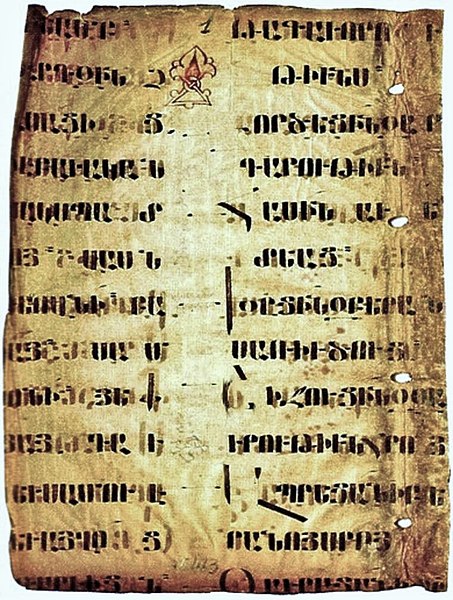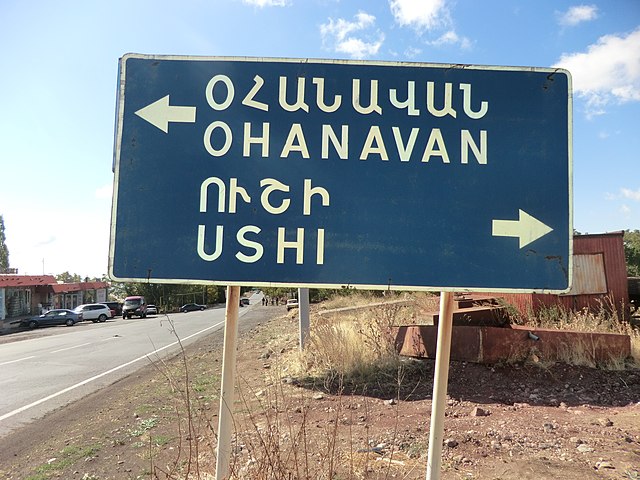Armenians are an ethnic group and nation native to the Armenian highlands of West Asia. Armenians constitute the main population of the Republic of Armenia and constituted the main population of the breakaway Republic of Artsakh until the 2023 Azerbaijani offensive in Nagorno-Karabakh and the subsequent flight of Nagorno-Karabakh Armenians. There is a wide-ranging diaspora of around five million people of full or partial Armenian ancestry living outside modern Armenia. The largest Armenian populations today exist in Russia, the United States, France, Georgia, Iran, Germany, Ukraine, Lebanon, Brazil, Argentina, Syria, and Turkey. The present-day Armenian diaspora was formed mainly as a result of the Armenian genocide with the exceptions of Iran, former Soviet states, and parts of the Levant.
Hayk, the legendary founder of the Armenian nation. Painting by Mkrtum Hovnatanian (1779–1846)
The Cathedral of Ani, completed in 1001
Ptolemy, Cosmographia (1467)
Persis, Parthia, Armenia. Rest Fenner, published in 1835.
Armenian is an Indo-European language and the sole member of an independent branch of that language family. It is the native language of the Armenian people and the official language of Armenia. Historically spoken in the Armenian highlands, today Armenian is widely spoken throughout the Armenian diaspora. Armenian is written in its own writing system, the Armenian alphabet, introduced in 405 AD by the canonized saint Mesrop Mashtots. The estimated number of Armenian speakers worldwide is between five and seven million.
Armenian manuscript, 5th–6th centuries.
The Four Gospels, 1495, Portrait of St Mark Wellcome with Armenian inscriptions
First printed Armenian language Bible, 1666
Armenian language road sign.








